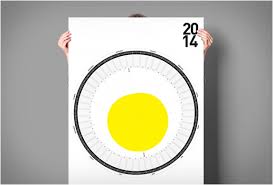Fall Falling Leaves Moon
 This calendar, circular, with the sun’s hourly presence each day indicated in the middle by a somewhat squashed circle, displays a yearly calendar that conforms to my understanding of time. Rather than day running after day in small squares, linear fashion, on this calendar the days and the months follow each other in curved segments of a circle, finally rejoining, December 31st and January 1st. As opposed to most Westerners, I privilege the circularity of time, the Great Wheel, which, like this calendar, follows the earth around the sun and, like this calendar, begins again where it has been artificially ended.
This calendar, circular, with the sun’s hourly presence each day indicated in the middle by a somewhat squashed circle, displays a yearly calendar that conforms to my understanding of time. Rather than day running after day in small squares, linear fashion, on this calendar the days and the months follow each other in curved segments of a circle, finally rejoining, December 31st and January 1st. As opposed to most Westerners, I privilege the circularity of time, the Great Wheel, which, like this calendar, follows the earth around the sun and, like this calendar, begins again where it has been artificially ended.
It’s easy to forget, in our casual way of saying what hour it is, or what day it is, or what year it is, that none of this segmentation has any but the most abstract relationship to the natural world. The year, for example, marks a spot in earth’s revolution around the sun, erects a flagpole, or, better, a timepole and says this is a lap marker. Each time we pass this timepole we’re going to add one unit to the last one. By not so common agreement we start counting units for calendar purposes on a date supposedly coincident with the death of a man claimed to be a god, two-thousand and fourteen laps ago. I say not so common agreement because the various numbers to put on this “year” vary a good bit among Jews, Muslims, Hindus, Chinese and Old Church Orthodox, just to name a few.
Though this is a very common human meme, the calendar and its year, it is not given in the nature of earth’s orbit. What observation of the orbit suggests is the linked nature of time, it’s non-divisable reality (perhaps even its non-reality). What I choose to emphasize is the turning of the Great Wheel, with its repetitive though not identical seasons, its warm periods and cool periods, its fertile days and its fallow days. In this way, too, I choose to emphasize the ongoingness of human life. The human cycle, which follows the Great Wheel by analogy, understands birth as the springtime of a life, adulthood in the fertile seasons, and the time of aging and death, analogous to the fallow time. And this cycle, though it apparently begins and ends in each individual’s life, in fact, goes on with births following deaths and deaths following births.
May the circle be unbroken…
